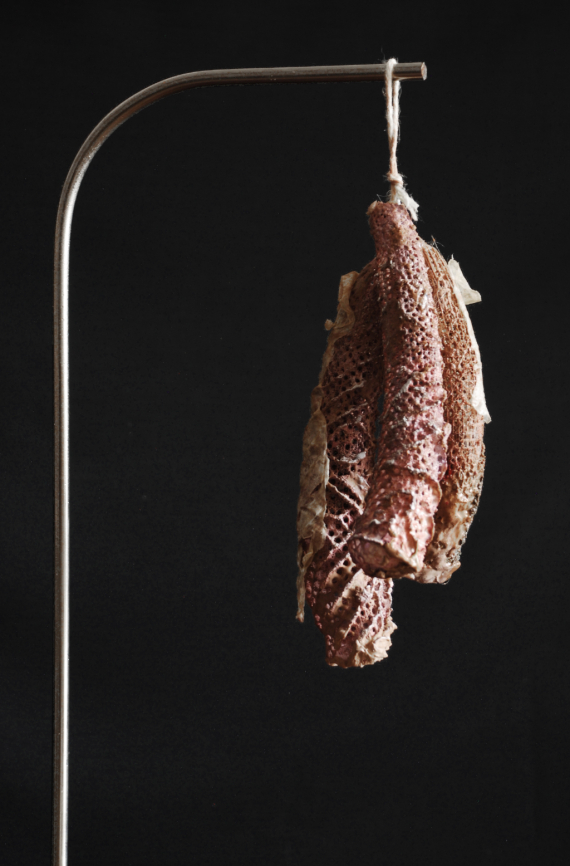Posted on Wed 5 Jul 2017
Predictions, projections, challenges and ideas
What might we eat in the future, and how will we produce it? A brief summary of my research so far.

Posted by
David Lisser
I think a lot about the future and I make sculptures and installations that explore our hopes and fears for tomorrow.Project
Meal Plans
Meal Plans is a research-led art project that imagines the future of food as if it were history.As I write this in early July, there is a persistent drizzle outside, it’s 13 degrees and it’s been raining steadily for the last 36 hours. I’m at home in Newcastle. BBC weather tells me that Bristol will reach 27 degrees today with bright sunshine and excellent visibility.
The fact that I appear to have crossed seasons helps to enhance the sense of distance between the two cities. Which to be is honest, is quite welcome – I’m attempting to reflect upon the first few weeks of my Meal Plans project at the Pervasive Media Studio and am finding it somewhat tricky.
Briefly put, Meal Plans aims to imagine the future of food, and food technology, as if it were history and will result in a museum-style exhibit that shows sculptural pseudo-artefacts and relics from a future age.
The first stage of the project has been to research various predictions, projections, challenges and ideas about what we might be eating in the future, and how we might produce it, which is what I’ve been doing at the Pervasive Media Studio over the last couple of months. To help elaborate this picture, I'll soon be working alongside At-Bristol to run interactive workshops that ask visitors to collaboratively create and design new animals, plants and other future foodstuffs - which I'm sure will yield some interesting results!
Upon starting work at the Studio, I quickly realised it is an absolutely fascinating place, primarily because of the people who congregate there. To have a chat next to the coffee machine can be dangerously interesting – you start talking about coffee or chocolate and in half an hour you’ve covered experiments in isolation, dementia, physical storytelling, the darker side of virtual reality and a french artist who is trying to become a surrogate hen.
For anyone who is curious about the world, it is wonderful. For anyone who wants to crack on with some work it can be challenging! There should be an old hand-written map of the studio with ‘here be wond’rous distractions’ written all over it.
In this context, my research process has been pretty varied, I’ve spent a lot of time reading UN reports, NGO projections and FAO life-cycle analyses, but this being the studio, I’ve also had fantastic conversations that consider the implications of alcohol secreting insoles, industrial cannibalism, human composting centres and flavour-terrorism – to name a few.
I’m not sure whether it is my general mistrust of government and corporations to work for real long-term benefit, or a natural disposition towards the dystopian but I initially found myself arriving at a fairly bleak picture of the future.
As such, I actively sought optimistic viewpoints in order to temper my disquiet, and to my surprise I did indeed found causes for hope. I’ll name just a couple here, but if there is one thing that cannot be predicted, it is human innovation. Manchester University’s recent claim to have achieved promising de-salination using graphene stands out as particuarly promsing, as does the environmental benefits of cultured meat as compared to traditional livestock rearing. Even the fact that we waste 30% of our food globally can be both a cause for horror and a valuable opportunity - We already produce enough food for the world, it just isn't well managed or distributed.
Naturally though, each new technology comes with caveats, and there is no silver bullet for the challenges facing global food-production and it is this complex picture that I hope to engage with through this project.
Kranzbergs first law of technology states: ‘technology is neither good nor bad, nor is it neutral.’ - By this I think he means that our collective relationship with technology is intricate and messy, the consequences of our interactions have implications beyond the immediate purposes of any given technology, and those implications vary greatly across societies, geographies and time-scales.
It is a fools errand to confidently predict an exact future, but by imagining and presenting potential future scenarios in as much fullness as possible we might begin to unpick some of the unexpected implications of our technologies. In doing so we have another tool by which to assess the path we’re taking today and weigh up whether we want to follow its course into tomorrow.

collagen scaffold no1 - saucisson © David Lisser 2017